|
 Secure Site
Secure Site
|
 |
Archive for the 'Meditation Timers' Category
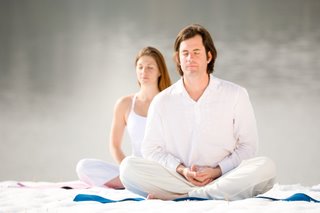 mind-body therapies help your heart Research shows that the stress-inflammation cycle is as detrimental to your heart as a plate full of the cheesiest fettuccine Alfredo. “Stress hormones, such as adrenaline and cortisol, cause the arteries to constrict, which results in a rise in blood pressure and decrease in blood flow,” Moyad explains. Less blood flow means less oxygen circulating through the body to combat free radicals—unstable cells that can damage healthy tissues. “We know now that bad LDL cholesterol only becomes threatening when levels get so high that it binds with free radicals,” Moyad says. When this happens, LDL changes structure and gets absorbed by the arterial walls’ lining, resulting in plaque buildup, or atherosclerosis. Such tissue damage causes the immune system to go into overdrive, triggering inflammation. Reduce your risk with effective mind-body therapies like meditation, yoga, exercise or massage.
The Digital Zen Clock & Meditation Timer serves as a countdown and interval timer for yoga, meditation, bodywork, etc.; and it can also be set to chime on the hour as a tool for “mindfulness.”
adapted from Natural Solutions Magazine, January 2010 by Kate Hanley
 bamboo meditation timer and natural alarm clock with gentle chime Now & Zen’s Clock and Meditation Timer Shop
1638 Pearl Street
Boulder, CO 80302
(800) 779-6383
Posted in Beauty, Chime Alarm Clocks, intention, Japanese Inspired Zen Clocks, Meditation Timers, Meditation Tools, mindfulness practice, Natural Awakening, nature, Well-being, yoga, Yoga Timer, Yoga Timers by Now & Zen, Zen Timers
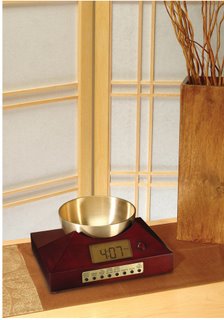 Meditation Timers As a result of fifteen years of product evolution at Now & Zen, we have created the world’s ultimate alarm clock, practice timer, and “mindfulness bell.” Our Zen Timepiece’s acoustic 6-inch brass bowl-gong fills your environment with beautifully complex tones whenever it strikes. In the morning, its exquisite sounds summon your consciousness into awakening with a series of subtle gongs that provide an elegant beginning to your day. When the alarm is triggered, the long-resonating gong strikes just once … then automatically, it strikes again in 3-1/2 minutes … then in 2 minutes … then in 1 minute … As shown in the chart below, the gong strikes gradually increase over 10 minutes, eventually striking every 5 seconds until turned off. Once you experience the Zen Timepiece’s progressive awakening, you’ll never want to wake up any other way. It also serves as the perfect meditation timer.
 Stillness of Being Now & Zen
1638 Pearl St.
Boulder, CO 80302
(800) 779-6383
Posted in Meditation Timers
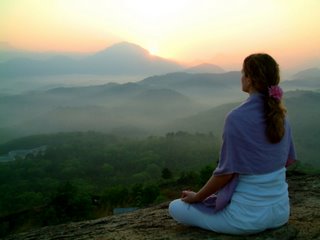 meditation sunrise Big Sky Mind
After a while, turn your attention from the surface of the lake toward the sky itself. Then imagine shifting your gaze from the reflections, the passing phenomena, to the sky within which they all arise and pass away. The sky is boundless, limitless. It contains everything that arises. The horizon is only a perceptual or conceptual boundary that can never be reached. Even on the cloudiest day, the sky is luminous above the clouds, pervasive, limitless, and free.
Awareness has the qualities of luminosity and limitlessness. It is present always, behind, between, and beyond all the ever-changing phenomena. Whenever you catch yourself identifying with the mental “clouds,” simply shift your identification from the clouds to the sky itself. Realize that what you’ve been seeking is what you already are and have always been! Big Sky Mind opens us to seeing that our true nature is this awareness within which all experience arises and passes away.
Our Zen Timepiece’s acoustic 6-inch brass bowl-gong clock is the world’s ultimate alarm clock, practice timer, and “mindfulness bell.”
It fills your environment with beautifully complex tones whenever it strikes. In the morning, its exquisite sounds summon your consciousness into awakening with a series of subtle gongs that provide an elegant beginning to your day. Once you experience the Zen Timepiece’s progressive awakening, you’ll never want to wake up any other way. It also serves as the perfect meditation timer.
adapted from Yoga Journal, by Frank Jude Boccio
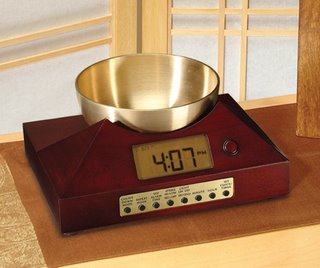 Zen Timepiece with brass singing bowl, a meditation timer Now & Zen
1638 Pearl Street
Boulder, CO 80302
(800) 779-6383
Posted in intention, Japanese Inspired Zen Clocks, Meditation Timers, Meditation Tools, mindfulness practice, Now & Zen Alarm Clocks, Well-being, Zen Timers
 Meditation The Meaning of OM
You’ve been om-ing your way through yoga class for years, but have you ever wondered what the mantra really means? According to the Yajur-Veda, one of the earliest sacred texts of the yoga tradition, om represents the entire universe — past, present, and future. The sound is actually a combination of four parts: a (“ah”), or wakefulness; u (“oh”), the dream state; m (“mmm”), the quietness of deep, dreamless sleep; and the silence that follows, which represents pure consciousness.
As yogis will attest, the vibrations of om help settle the mind in a profound way. But don’t wait until your next hatha class to say it. Use it whenever you need a quick infusion of calm.
Our Zen Timepiece’s acoustic 6-inch brass bowl-gong clock is the world’s ultimate alarm clock, practice timer, and “mindfulness bell.”
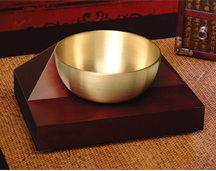 Meditation Timer and Singing Bowl Alarm Clock for Yoga and a Peaceful Awakening It fills your environment with beautifully complex tones whenever it strikes. In the morning, its exquisite sounds summon your consciousness into awakening with a series of subtle gongs that provide an elegant beginning to your day. Once you experience the Zen Timepiece’s progressive awakening, you’ll never want to wake up any other way. It also serves as the perfect meditation timer.
adapted from Whole Living Magazine, April/May 2007
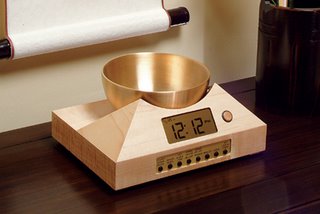 Zen Timepiece, a brass singing bowl clock and timer for meditation and yoga
Now & Zen
1638 Pearl Street
Boulder, CO 80302
(800) 779-6383
Posted in Meditation Timers, Meditation Tools, mindfulness practice, Well-being, Zen Timers
 Staying Healthy - woodblock print by Toyohara Chikanobu (1838-1912), dated 1896; In the midst of the cold winter months, a burst of sunshine is a welcome sight. When most days are gray, it’s hard to remember that the sun is still there in the sky—it hardly pierces through the gray curtain of clouds that seems to seal in cold air. The apparent absence of sunlight can drive even the most chipper of people into a mental funk.
One reason why the winter months can be so hard is due to the inability of the body to attain and process vitamin D, which is responsible for keeping autoimmune diseases, seasonal affective disorder, poor bone health, and arthritis at bay. The sun is the body’s single most reliable source of vitamin D, and between the months of November and April, there are no ultra-violet B rays available north of Atlanta, Georgia. This causes vitamin D levels to drop drastically.
Vitamin D boosts the immune system, thus explaining why the common cold and influenza make a widespread appearance this time of year. Sunlight is also known to decrease stress and anxiety, not necessarily because of its affect on vitamin D levels, but because of its general mood-boosting properties; serotonin production increases in sunlight.
So how do you make sure you get enough sunlight in winter? Get outside for at least 30 minutes a day even if you’re bundled up like an Arctic explorer. If 30 minutes isn’t an option due to a packed schedule, a light therapy lamp with 10,000 lux simulates daylight and tricks your mind into reaping the mental benefits of sunlight. If you’re feeling fine in your mind but can’t get rid of a cold, Vitamin D can be found in cod liver, fish oil, herring, oysters, salmon, halibut, soymilk, shrimp, milk, fortified cereals, mushrooms, and eggs. Northerners will want to explore a vitamin D supplement.
In the dead of winter, it may be hard to imagine the warm, summery days that will eventually return, but they will. In the meantime, load up on vitamin D, bundle up, and keep moving!
adapted from Natural Solutions Magazine, February 2012
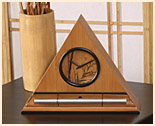 Zen Alarm Clocks and Timers for Yoga and Meditation Now & Zen – The Zen Alarm Clock Store
1638 Pearl St.
Boulder, CO 80302
(800) 779-6383
Posted in Meditation Timers, mindfulness practice, Natural Awakening, nature
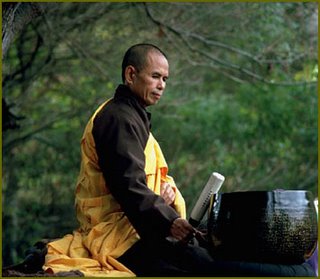 Compassionate Listening Practice by Thich Nhat Hanh When we speak of listening with compassion, we usually think of listening to someone else. But we must also listen to the wounded child inside of us. The wounded child in us is here in the present moment. And we can heal him or her right now.
Practice:
“My dear little wounded child, I’m here for you, ready to listen to you. Please tell me all your suffering, all your pain. I am here, really listening.” If you know how to go back to her, to him, and listen like that every day for five or 10 minutes, healing will take place. … Do that for a few weeks or a few months, the wounded child in you will be healed. Mindfulness is the energy that can help us do this. —Thich Nhat Hanh, from Anger: Wisdom to Cool the Flames
Our Zen Timepiece’s acoustic 6-inch brass bowl-gong clock is the world’s ultimate alarm clock, practice timer, and “mindfulness bell.”
 Singing Bowl Mindfulness Gong and Timer adapted from Natural Solutions Magazine, January 2008
 Zen Timepiece with brass bowl, a perfect meditation timer with gentle gong Now & Zen’s Clocks and
Timers
1638 Pearl Street
Boulder, CO 80302
(800) 779-6383
Posted in intention, Meditation Timers, Meditation Tools, mindfulness practice, Natural Awakening, prayer, Well-being, zen, zen monks, Zen Timers
 Two Women Walking, Shunshô Katsukawa, Ukiyo-e Meditation: It’s all about sitting still, inside a room, going inward. Right? Well, not necessarily. Buddhist tradition has long incorporated a more active technique known as walking meditation. Popularized in the West by Vietnamese monk Thich Nhat Hanh and other teachers, walking meditation often crops up at meditation retreats as a periodic break from long sessions of sitting.
For me—especially on a fine summer morning—a contemplative barefoot circuit of my dewy backyard can sound a whole lot more enticing than hunkering down on a cushion inside. And I seem not to be alone. Across the country, it’s getting easier to find opportunities to meditate in action. Dude ranches, sea kayaking outfitters, and wellness retreats now offer programs that combine basic mindfulness practice with everything from backpacking and rock climbing to horseback riding and paddling.
And why not? A growing body of scientific research supports meditation’s physiological and psychological benefits, including boosting the immune system, helping lower blood pressure, and reducing stress, anxiety, and depression. “Taking mindfulness outside, into the natural world, is another way of connecting the dots,” says Kurt Hoelting, who leads contemplative sea kayaking trips in Alaska. “It helps make it apparent not just intellectually, but also in our bodies, that this process of engagement with the present moment is an avenue to healing and deep restoration.”
Barefoot hiking
Sometimes, freeing your feet can be a revolutionary act. For walking meditation, Thich Nhat Hanh recommends ditching footwear. “You can feel the floor and connect with the earth more easily without shoes,” he writes in Walking Meditation (Sounds True, 2006). “The flow between you and Mother Earth becomes stronger. The longer you practice walking with this connection, the more your heart will be softened and opened, and the more you will feel nurtured, solid, and taken care of by the earth.”
 ume tree (japanese blum) Kaisan-do of Ryodaishi temple Most “barefooters” don’t meditate in any sort of deliberate way, and chances are, they’ve never heard of Thich Nhat Hanh. But his words certainly would resonate clearly. “Going barefoot makes you feel more connected with nature, that you’re part of a bigger universe,” says Jim Guttmann, a member of Barefoot Hikers of Minnesota, an informal group that gathers for regular boot-free rambles.
Like any meditation technique worth its salt, mindful walking begins with a focus on the breath. Breathing in and out with awareness brings the mind home to the body. Practice twice a day, for as few as 10 breaths initially. Breathe normally, sit straight but relaxed, a half-smile on your lips.
Now start walking slowly. Walk around the perimeter of your largest room, or choose a quiet, scenic spot outside. To establish a steady rhythm, try counting steps and using words. If you take three steps for each in-breath, for example, you can say silently, “Lotus flower blooms.” And visualize flowers blooming under your feet. The main thing is to have no goal of arriving; just enjoy each step.
 stillness practice: walking meditation in nature For some, these activities are a way to explore mindfulness through a pastime they already know and love. Others have established a meditation practice but want to broaden their experience. For just about anyone, these “conscious” outings are a great way to slow down, savor silence (which helps increase awareness of what’s really going on, both inside and out), and reconnect with nature—along with one’s own mind, body, and spirit.
excerpted from Natural Solutions, July 2007 (Adapted from Walking Meditation (Sounds True, 2006) by Nguyen Anh-Huong and Thich Nhat Hanh)
Use our unique “Zen Clock” which functions as a Yoga & Meditation Timer. It features a long-resonating acoustic chime that brings your meditation or yoga session to a gradual close, preserving the environment of stillness while also acting as an effective time signal. Our Yoga Timer & Clock can be programmed to chime at the end of the meditation or yoga session or periodically throughout the session as a kind of sonic yantra. The beauty and functionality of the Zen Clock/Timer makes it a meditation tool that can actually help you “make time” for meditation in your life. Bring yourself back to balance.
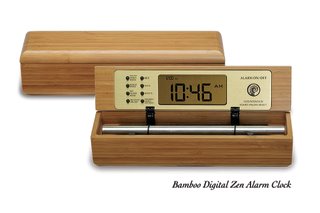 Bamboo Zen Chime Clocks & Timers Now & Zen – The Meditation Timer Store
1638 Pearl Street
Boulder, CO 80302
Posted in Chime Alarm Clocks, Japanese Inspired Zen Clocks, Meditation Timers, Meditation Tools, mindfulness practice, zen monks, Zen Timers
 meditating on a rock According to traditional Chinese medicine (TCM), the heart is the emperor of the body—it feeds all systems and rules the mind. The connection between the mind and the heart is more than just metaphysical: In a 2008 study conducted by researchers at the Medical College of Georgia, adolescents who practiced simple breath-awareness meditation for 20 minutes a day—10 minutes in school and 10 minutes at home—for three months experienced significant reductions in blood pressure and resting heart rate. Laurie Steelsmith, ND, a specialist in TCM and author of Natural Choices for Women’s Health (Three Rivers Press, 2005), recommends meditating 20 minutes a day at least four times a week to reap the full benefits of the practice. Or give your heart a mini-vacation by settling in with your favorite soothing CD. Research shows the heart synchronizes its beating to increases and decreases in music tempo. “We often use classical music to help our patients’ heart rate slow to 60 to 70 beats per minute,” says Michelle Cameron, director of healing solutions at the Cleveland Clinic.
The Digital Zen Clock & Chime Timer serves as a countdown and interval timer for yoga, meditation, bodywork, etc.; and it can also be set to chime on the hour as a tool for “mindfulness.”
Digital Zen Clocks feature a “high” and “low” chime strike volume control, which allows you to adjust the sound of the chime to suit your needs. The Digital Zen Clock runs on 2 AA batteries (not included) and can also be plugged in with the included AC jack. The clock includes a lighted digital display (which can be set to be lit full-time when plugged in).
adapted from Natural Solutions Magazine, January 2010 by Kate Hanley
 Natural Chime Meditation Timers in Solid Maple Now & Zen’s Natural Chime Timer Shop
1638 Pearl Street
Boulder, CO 80302
(800) 779-6383
Posted in intention, Meditation Timers, Meditation Tools, mindfulness practice, nature, Well-being, zen, Zen Timers
 the art and science of a balanced life
The funny thing about balance is that people rarely consider it—until it eludes their grasp.
In both the physical sense and through how we live our lives, balance is often an afterthought. Let’s use standing upright as an example: Typically, the act of standing is so rehearsed, we do not notice how truly amazing this action is. If you watch a child learning to stand, however, or have ever experienced vertigo, you remember that performing this feat is only easy when you have balance.
The act of standing requires the ability to make small corrections, which give the appearance of being centered. When standing still, there is always movement happening; it is a process of give and take.
 Ohara Koson (Shoson). 1877-1945 two carp and white lotus 1933 In physics, balance only occurs when two equal forces are applied in opposite directions. Standing requires movement, but the shifts are small. If you sway a bit to the right, you naturally counter-balance by shifting to the left. It’s these small corrections that keep you centered. Beingout of balance means the correction, or counter-balancing movement, was not effective.
The same is true with life balance. However, many of us fail to make the small corrections in time. Maybe you focus too much on work and now have relationship problems, or spend too much money and are now in debt. Maybe you let your physical fitness go and now face an illness. These big imbalances are very disruptive and can be avoided.
But first, let’s talk about life balance. What is it? Life balance can be identified by feelings such as joy, happiness, confidence, hopefulness, and ease. Life balance is a sense of well-being—and feeling well creates wellness in many ways, such as lowering blood pressure. Achieving balance even improves your ability to manage stress. Remember this if nothing else: Life balance starts with positive feelings. You need to believe you can have the things you want in life, first.
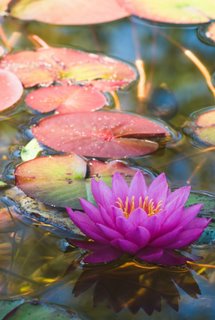 creativity The art of life balance requires creativity. If you push too hard you will miss its subtle rewards. Navigating easily through life requires a sense of curiosity and playfulness, like that of a child. This doesn’t excuse you from taking life seriously, simply that you release the illusion that you can control everything. By exerting control over everything, you
may end up limiting yourself. The art of life balance requires dedicated time for having fun and observing the world around you. You may be surprised at what you find if you do.
Life balance comes from trust, faith, and fun counter-balanced by logic. The science of life balance can be thought of as your logical side. Typically we think of this as planning and scheduling, but it is much more. The science of balance has been studied for millennia. If you look at the Taoist teachings of yin and yang, for example, you will discover that each side of the familiar symbol includes a small circle of the opposite color at the center. Believing that nothing is totally black or white—right or wrong—can help you perceive circumstances in a new way.
Unsure where to start? Here’s an exercise you can do. Take a moment to write down these categories so you can rate them in a moment:
• Career/School
• Finances
• Health
• Significant Other
• Family Life
• Friends
• Community
• Physical Environment
• Other (list anything else that comes to mind)
Next, rate each area of your life according to your level of satisfaction. If you feel completely satisfied, give yourself a rating of 3. Somewhat satisfied, a 2. And not satisfied, a 1.
Look at the areas you rated as a 1. These are the areas that may be creating imbalance in your life. If you feel sad or overwhelmed, please stop for a moment and take a few full, gentle breaths.
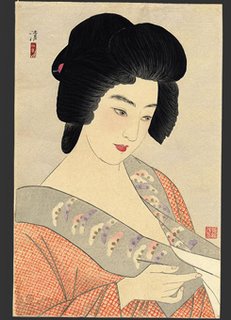 how to find balance in your life The first step to life is creating awareness and the second is centering. You will not create good results in your life if you feel panicked. And remember, creating balance does not mean you have to change anything. Instead maybe take a moment to look at the 3s on your list and feel grateful.
If there are no 3s take a moment to feel grateful anyway. You are here reading this article, which means you are creating an important shift already. Let that be enough for now and enjoy. The important thing to remember is that life balance is a state of ease, so try to connect to these feelings whenever possible. Even if your life feels chaotic, your change begins from within. Close your eyes and visualize the changes you would like to see in your life. This allows you to tap into your creative side. Then open your eyes and start to write down your goals and dreams. When you are ready, come up with a plan to connect these with your logical side. Now that’s balance in action!
Jenny Gallagher is a certified life, wellness and business coach. She is also a registeredyoga teacher and author of Yen Path: Taking Steps Towards What You Want in Life (2011). For more information go to www.jennygallagher.com.
Our Zen Timepiece‘s acoustic 6-inch brass bowl-gong clock is the world’s ultimate alarm clock, practice timer, and “mindfulness bell.”
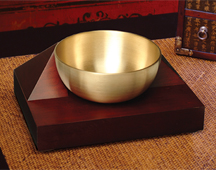 Well-being Chime Alarm Clock and Meditation Timer It fills your environment with beautifully complex tones whenever it strikes. In the morning, its exquisite sounds summon your consciousness into awakening with a series of subtle gongs that provide an elegant beginning to your day. Once you experience the Zen Timepiece’s progressive awakening, you’ll never want to wake up any other way. It also serves as the perfect meditation timer.
 Singing Bowl Alarm Clocks with Real Acoustic Sounds Now & Zen’s Chime Alarm Clock Store
1638 Pearl Street
Boulder, CO 80302
(800) 779-6383
Posted in Meditation Timers, Meditation Tools, mindfulness practice, Well-being
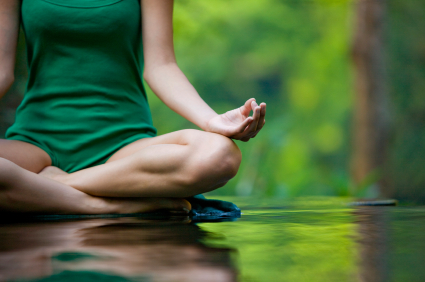 meditation 101
Meditation is often something thought of as a practice reserved for monks or the spiritual elite. Happily, this is far from the truth.
It’s been said that there are many paths up the mountain of meditation. We are living in a time where the mountain is closer and more accessible than it’s ever been. With the presence of the Internet and the ever-expanding global village, we have access to many paths that were far beyond reach only years ago. The seeker today has access to an unlimited wealth of information. With the click of the mouse you can access meditation techniques that are commonplace in remote parts of the world.
A really cool thing about living in our time is science and spirituality finding common ground. Today we have the science to quantify the benefits of meditation that the practitioner previously had to take on faith alone. Western medicine has traditionally shied away from mediation as a “prescription,” but now that there is concrete, scientific evidence proving the benefits of meditation, we are seeing the mainstream medical community look to mediation as a viable treatment option for a number of conditions and illnesses.
Let’s take a quick look at what science has shown us about our brainwaves: Every day, your brain is constantly operating on various wavelengths. While you are awake and interacting with others, you are in the Beta wavelength, at about 14 to 30 cycles per second (or hertz). When you get into the Alpha waves, you are still alert and paying attention, but get into a relaxed and calm state while your brain is at 9 to 13 hertz. When you get even more relaxed—and sometimes zoned out—you are in the Theta waves at about 4 to 8 hertz; we call this the meditative state. When you go further into a deep sleep, you are in the Delta waves at 1 to 3 hertz.
When it comes to dealing with stress, in many ways our brain is operating on the same basic circuitry as our ancient ancestors the cavemen, with a primal “fight, flight, or freeze” reaction to stress/ danger. Our caveman brain can be triggered by stress—even perceived stress that may or may not be real—with a primal: “Oh my God! I’m being chased by a saber-toothed tiger!” Cortisol and adrenaline are then pumped into our systems, we experience a rise in glucose levels, and we are able to flee or fight the danger. If we take flight or fight, our bodies break down those chemicals— this is the original design of the flight response. When we are stuck in this position, all of our rest, digest, repair, and reproductive systems take a back seat to the emergency.
Unfortunately, the reality of our modern lifestyle is that most of us are sitting at a desk being chased by something like a deadline or the perceived danger of job loss (not by an actual saber toothed tiger), but our brains react much the same way and those chemicals in our bodies turn into figurative shards of glass when they’re not being burned off by exercise.
So, how do we dissolve those shards and deal with the stress? There are many ways to do this, while exercise is one of the best ways to burn off the chemicals once they are unleashed, meditation is one of best preemptive methods for staying centered and being able to ask ourselves “Is this really a saber-tooth tiger chasing me?” We’ll talk later about slowing down our thoughts, but first, let’s look at how that meditative state in the Alpha/Theta brainwave pattern brings our bodies and some of those chemicals back into balance.
 meditation When you meditate, you body releases DHEA (a chemical that promotes relaxation, memory, and reduces cardiovascular disease risk), serotonin levels rise and your blood pressure starts todrop. In meditation you are completely awake and alert, but at the same time still and quiet, coming into full consciousness of the present moment. Meditation brings us to a depth within ourselves where we can access our inner compass and our deep, inner calm: that place of peace and awareness we alreadyhave.
Take this metaphor by David Fontana, PhD: The sky itself is our true nature and true self, but there are clouds in the sky obscuring our view. The clouds represent our “monkey mind” or our constant mental chatter. In our normal Beta state, the clouds of our thoughts, worries, hopes, and fears are continually obscuring our view, and it is all but impossible to see the sky for what it is. Meditation is our tool to clear away the clouds and experience the vastness of the sky, and the vastness of our true being.
How to Meditate
One of the first things you want to do is decide on a place, time, and position for meditation. Ask yourself: What’s the best time of day for me? What is my commitment level? Can I make a commitment to do it at this time, every day? Will it be for 10 minutes, 20 minutes? How long will I commit to this? Will it be 10 days, 30 days, 60 days?
Write down your answers and journal about it. Then mark your calendar and note how you felt on the days you meditated. Writing these things down will keep you more accountable and set you up for continued success.
Find the spot you’re going to meditate in, but make sure it’s not a spot that you watch television in, or do anything else. When you train your body to recognize that “this is where I meditate,” you are supporting your meditation with a physical habit that your body recognizes.
Also think of bells and smells. Find the things that make your space sacred, create an ambiance that signifies that this is your space for meditation. Ask yourself: Do I need sound? Do I need candles or incense? Start with what you’re attracted to and find those things that resonate with you.
Once you’ve found your place, be sure to sit with your head, neck, and spine in alignment. In this position, you minimize the stress level for your body because it doesn’t have to work as hard to maintain balance. This position also allows you to be open to relaxation and minimizes your chances of falling asleep.
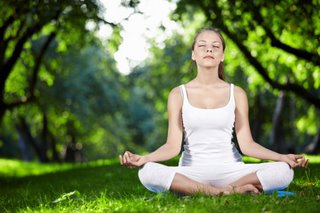 how to meditate Now that you’ve found the place and time to meditate, let’s talk about the nature of your mind. It has never been trained to meditate and it’s natural that it will try to rebel. St. Teresa of Ávela said the mind before meditation is like a wild horse. When you decide to meditate, the mind attempts to buck you off and do everything it possibly can to keep you from “breaking” it. If you stay on it until you break it, that horse (your mind in meditation) will do you a great service.
I’ve found the major roadblocks for people who are just beginning a meditation practice tend to fall into two categories: those that think they need to be perfect at meditation and give up because they’ miss a day or two, or feel they should have the mind of a monk with no distractions after just a few attempts. Or there are those on the opposite end of the spectrum who are sporadic about their practice and wonder why the benefits haven’t shown themselves. So when you begin meditation, expect that your mind is going to be like an untrained horse.
I find it’s best to set yourself up for success by starting with a short, 10- minute meditation. Meditating can be overwhelming for those who start with 30-minute meditations (or more), because the wild, untrained horse of your mind can be bucking and challenging you the entire time. Ten minutes is enough for people to start training
themselves for meditation and feeling a little bit of success—like it’s working.
Think of meditation like exercise: You wouldn’t expect yourself to go into a gym and lift 150 pounds on your first try. You have to start with 10 pounds first and train up to it. It’s the same with meditation, and the 10-minute mark seems to be a great starting point. When you first start to meditate, your brain usually goes off in different directions: to your grocery list or reminding you that you need to stop at the gas station on the way home. It’s a typical reaction for the “critic” in you to say “Oh no, I’m not meditating! I knew I couldn’t do this.” Instead of giving up, bring yourself back to center by focusing on your breath. At this point, you’re already in the driver’s seat of consciousness or you wouldn’t have noticed that you were distracted. Each time you catch yourself drifting off and bring yourself back to center, you are developing a muscle in your mind. Just like any other muscle, it needs to be trained, and this muscle will benefit you in countless ways.
Once you are able to reach this meditative state, you become the master of your mind (instead of a slave to it) and are able to push away the clouds of your monkey mind.
Many Ways to Meditate
Again, I bring us back to the parallel of exercise: Once you decide to embark on an exercise program, there are many different activities you can choose from and many classes you can take (aerobics, yoga, swimming, weight lifting, and jogging to name a few). You may try many until you find one that fits. Embark upon your mediation practice in much the same way: Try different types of meditation until you find one that resonates with you and that you feel you can practice for a time.
There are many different paths up the mountain of meditation within the great traditions of Buddhism, Taoism, Hinduism, Sufi, and Kabbalah (amongst many others), and the newer western traditions, as well. The list below is by no means comprehensive, but rather a quick snapshot to get you thinking about where to begin your meditation journey. In addition to seeking out places of worship, you can also find many great, guided meditations from our modern masters.
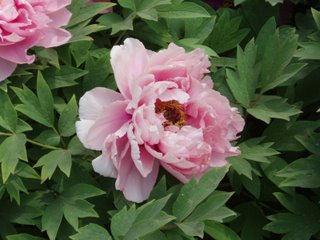 guided meditation Guided meditation: This can be a visual or an auditory meditation that can inspire a set of images, feelings, smells, or sounds. This is a great place to start it helps to give you a place of focus and you can follow the image through, rather than trying to simply come to silence and stay there. That is sometimes too abstract of an idea for some people to grasp. It is also very helpful for those whose monkey mind likes to go crazy.
Mindfulness meditation: This style, derived from the Buddhist discipline called vipassana, is the practice of staying in the present and being in the seat of consciousness (remember the driver’s seat from before?), and being the observer of the thoughts and pictures that pass through your mind. The goal is allowing those thoughts pass without being attached to them.
Transcendental Meditation™: This style, made popular by Maharishi Mahesh Yogi, gives you an individual mantra (or “meaningless phrase”) that serves as the vehicle to get you to that place of deep peace and meditation.
Moving Meditation: For those that find it very difficult to sit still, there are forms of meditation that involve movement. These can be tai chi, qi gong, or yoga asanas. Both tai chi and qi gong combine slow, purposeful movement while focusing on a conscious direction of energy flow throughout the body.
What benefits can I get from meditation?
Benefits may seem slow to come and are subtle at first, but are long lasting and very effective. Just like exercise, you’re not going to see the changes in your body right away, but if you keep with it, you know you will reap the benefits. It’s the same with meditation.
There are many benefits to practicing meditation, many of which have been scientifically documented and studied. In future issues of Natural Solutions, we will cover some of these benefits and specific meditation techniques. No matter which technique you choose to follow, you can expect to receive the basic benefits listed below.
Slowing Down. One of the immediate benefits experienced through meditation is that you will be able to slow down and be conscious of your thoughts. Many times we assume the thoughts in our mind are real because we perceive and experience them. When we slow down our thoughts (especially those of stress and danger) and we look at our self-talk while we are flipping out, we are using that muscle in our mind we developed that allows us to be in the driver’s seat and examine our thoughts. Challenge them and ask yourself if those thoughts are helpful to you.
 how to meditate
Responding to Life. After meditating for a while, you start to respond instead of reacting to life. The term “react” is a monkey-mind or knee-jerk reaction. To “respond” is to actually think about act consciously. Practicing meditation puts you in a position where you can take a breath, and actually respond to people and situations, especially those that are stressful or challenging.
In Tune. A long-term benefit of meditation is that you are able to be in line with yourself and the world around you. You are way more alert and in a more peaceful state of being. Not to mention that you will have lower blood pressure, reduced risk of cardiovascular disease by increasing circulation, reduced insulin resistance, reduced mortality rates, and reduced heart-rate variability. In some ways, it’s the perfect antidote to the amount of stress we have in our daily lives.
Jill Englund has a Bachelor of Science degree in metaphysics, and for the last ten years has helped organizations and individuals achieve their goals through guided imagery, creative visualization, and meditation in Minneapolis, Minnesota. Her guided mediations can be found at steps2wellbeing.com.
Although meditation can be done in almost any context, practitioners usually employ a quiet, tranquil space, a meditation cushion or bench, and some kind of timing device to time the meditation session. Ideally, the more these accoutrements can be integrated the better. Thus, it is conducive to a satisfying meditation practice to have a timer or clock that is tranquil and beautiful. Using a kitchen timer or beeper watch is less than ideal. And it was with these considerations in mind that we designed our digital Zen Alarm Clock and practice timer. This unique “Zen Clock” features a long-resonating acoustic chime that brings the meditation session to a gradual close, preserving the environment of stillness while also acting as an effective time signal. The Digital Zen Clock can be programmed to chime at the end of the meditation session or periodically throughout the session as a kind of sonic yantra. The beauty and functionality of the Zen Clock/Timer makes it a meditation tool that can actually help you “make time” for meditation in your life.
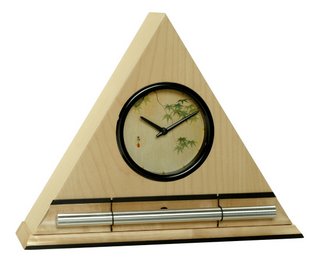 meditation timers and tools by Now & Zen, Inc. Now & Zen’s Acoustic Meditation Timer Shop
1638 Pearl St.
Boulder, CO 80302
(800) 779-6383
Posted in Meditation Timers, Meditation Tools, mindfulness practice
« Previous Page — « Previous Entries
Next Entries » — Next Page »
|
|
|
|